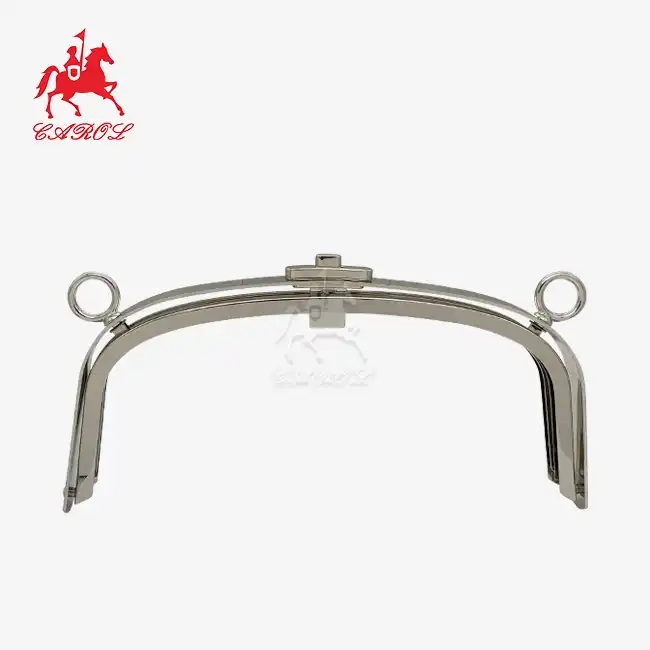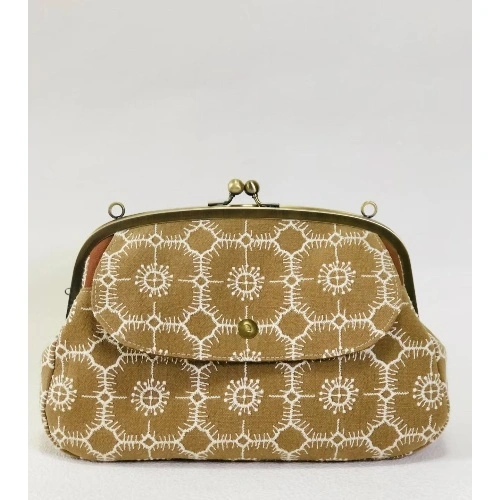Prep The Fabric Edge First
Making sure your fabric edge is ready is crucial before beginning the attaching procedure. This first step has the power to make or ruin your purse's durability and ultimate appearance. Trim any extra fabric first, leaving just enough to wrap around the purse's metal frame. A seam allowance of around 1/4 inch usually works well, however this may change based on the particular frame design and fabric thickness.
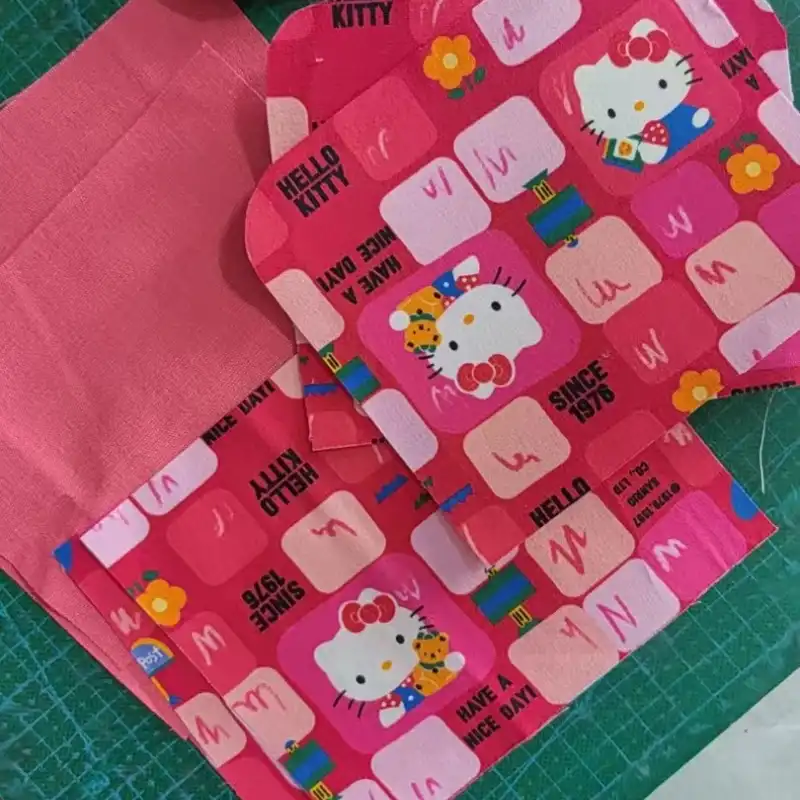
Next, think about strengthening your fabric's edge. This is an important step, particularly if you're using lighter fabrics or anticipate that the bag will be heavy. The required structure may be supplied by interface or a thin stabilizer strip along the edge. When wrapped around the frame, skiving the edge of leather or heavier materials may minimize bulk and provide a smoother finish.
Once reinforced, press the edge of the fabric neatly. In addition to making attachment simpler, a clean, well-pressed edge adds to the finished product's polished look. Use a pressing cloth to shield delicate textiles from direct heat while working with them.
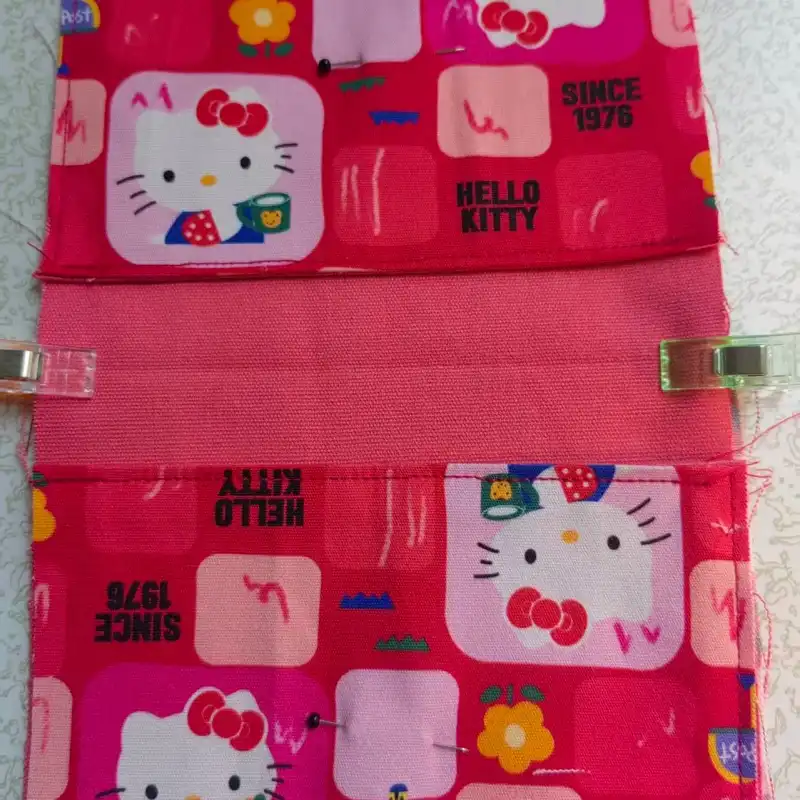
Use a fray check solution along the cut edge of textiles that are prone to fraying. By taking this additional precaution, you can stop ugly threads from escaping and jeopardizing the integrity of your connection. Before moving on to the following step, let the fray check thoroughly dry.
Use adhesive for initial positioning
Now that your fabric edge is prepared, it's time to proceed to the metal purse frame's first placement. Since it lays the groundwork for a safe and aesthetically pleasing connection, this stage calls for accuracy and care. To guarantee precision, start by spreading out your fabric and frame on a spotless, level surface in well-lit conditions.
At this point, choosing the appropriate glue is essential. Select a fabric glue or specific handbag frame adhesive that offers a secure hold without damaging the chosen material. Many artisans utilize the E6000 due of its endurance and adaptability. To guarantee compatibility and prevent any unexpected reactions, you should always test your glue on a scrap piece of cloth first.
Line the interior of the metal handbag frame with a thin, uniform layer of glue. To avoid the adhesive drying before you can arrange the cloth, work in tiny parts. Make sure your fabric's edge is correctly spaced and centered as you carefully match it with the frame. Press the fabric gently into position, being sure to smooth out any bubbles or creases.
You may need to use tiny instruments, such as a bone folder or a wooden cuticle stick, to carefully tuck the cloth into all the nooks and crannies of frames with complex patterns or curves. A cleaner, more polished surface will be the outcome of this attention to detail. Take occasional breaks as you go around the frame to assess your progress and make sure both sides are symmetrical.
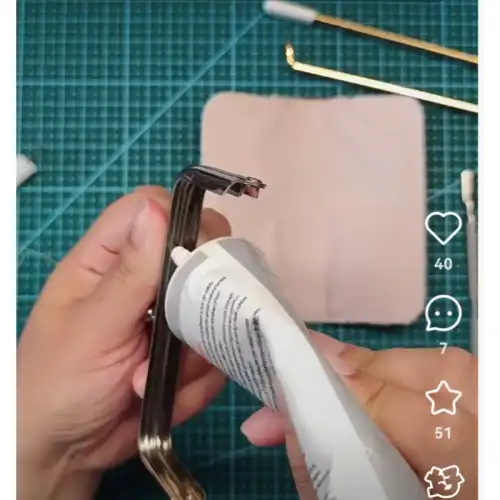
As directed by the manufacturer, let the glue cure once you've covered the whole edge. To guarantee a solid binding between the fabric and the metal handbag frame, this waiting time is essential. A properly cured glue can greatly extend the life of your handbag, so resist the urge to expedite this procedure.
Secure with hand stitching (for durability)
Although the glue offers a strong first bind, hand stitching is essential to guaranteeing your metal purse frame attachment's long-term durability. This last stage gives your project a touch of artistry while also strengthening the bond between the cloth and frame. Select a sturdy thread that matches or enhances the color of your cloth. Because of their strength and wear resistance, upholstery thread and heavy-duty polyester thread are great choices.
To start, thread a needle with two strands of thread for added strength. Tie a tight knot at the end. Start at one end of the frame and thread your needle through the cloth at the metal purse frame's edge. Move it up and over the frame, then through the fabric again. This creates a whipstitch that encases the frame edge.
Maintaining uniform tension and equally spaced threads, continue this stitching pattern all the way around the frame. Stitches should be close enough to provide enough of support without puckering the cloth. To keep everything looking smooth, you may need to slightly modify the stitch length in regions with corners or curves.
Check your cloth on the back side as you work to make sure your stitches are not visible. A ladder stitch, which produces an almost undetectable seam from the exterior, is a good option if visibility is an issue. More formal or delicate handbag designs may benefit greatly from this method.
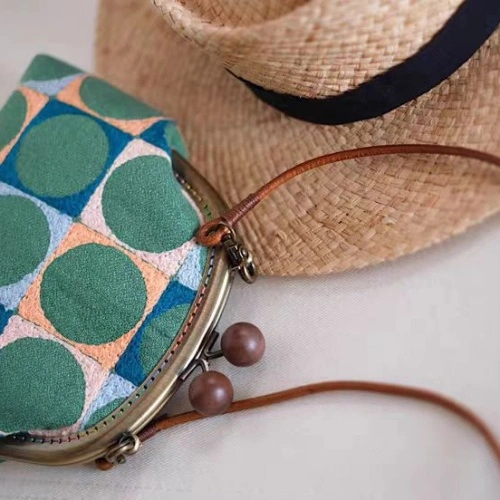
Secure your thread with many tiny stitches in the same location after you've reached the end of the frame. Tie off the thread in a secret knot on the interior of the bag. You could wish to apply a little amount of fabric glue or clear nail polish to the knot for further sturdiness so that it won't come away over time.
Pull gently to evaluate the strength of your stitching once you've finished attaching the metal purse frame. An attachment that is secure and resilient to everyday wear and tear should be achieved by combining hand stitching and glue. You have successfully connected a metal purse frame, bringing your bag-making abilities to a new level of professionalism. Take a time to appreciate your craftsmanship.
Metal Purse Frame Supplier: Carol
Carol is a renowned provider in the field, so there's no need to go elsewhere for high-quality metal purse frames for your projects. Carol, who has years of manufacturing, sales, and creative expertise, specializes in creating metal frames and hardware embellishments for luggage, leather products, and handbags. Their wide variety of products includes cutting-edge designs and a wide range of color choices that have become well-liked in both home and foreign markets.
Carol's standout advantage lies in their in-house electroplating facility, enabling them to offer comprehensive service from design to order processing, production, plating, and packaging. They pride themselves on delivering products with exceptional appearance, environmentally friendly materials, safety, and durability, all backed by top-notch after-sales support.
With their adaptable possibilities, Carol can satisfy your demands whether you're a huge producer or a do-it-yourself enthusiast. For example, their Triangle Flex Metal Frame, which comes in light gold finish in sizes such as 21.6 cm x 13.6 cm, is ideal for making purses, medical bags, and other closure hardware applications. These frames, which are made of iron and aluminum, may be customized to meet your exact specifications for material, color, and size.
Ready to elevate your purse-making projects with premium metal frames? Contact Carol at tony@carolxiao.com right now to make an order or talk about your unique requirements. Your next handbag design will be unique thanks to Carol's experience and high-quality materials.
_1753256285958.png)

_1754990596544.webp)
